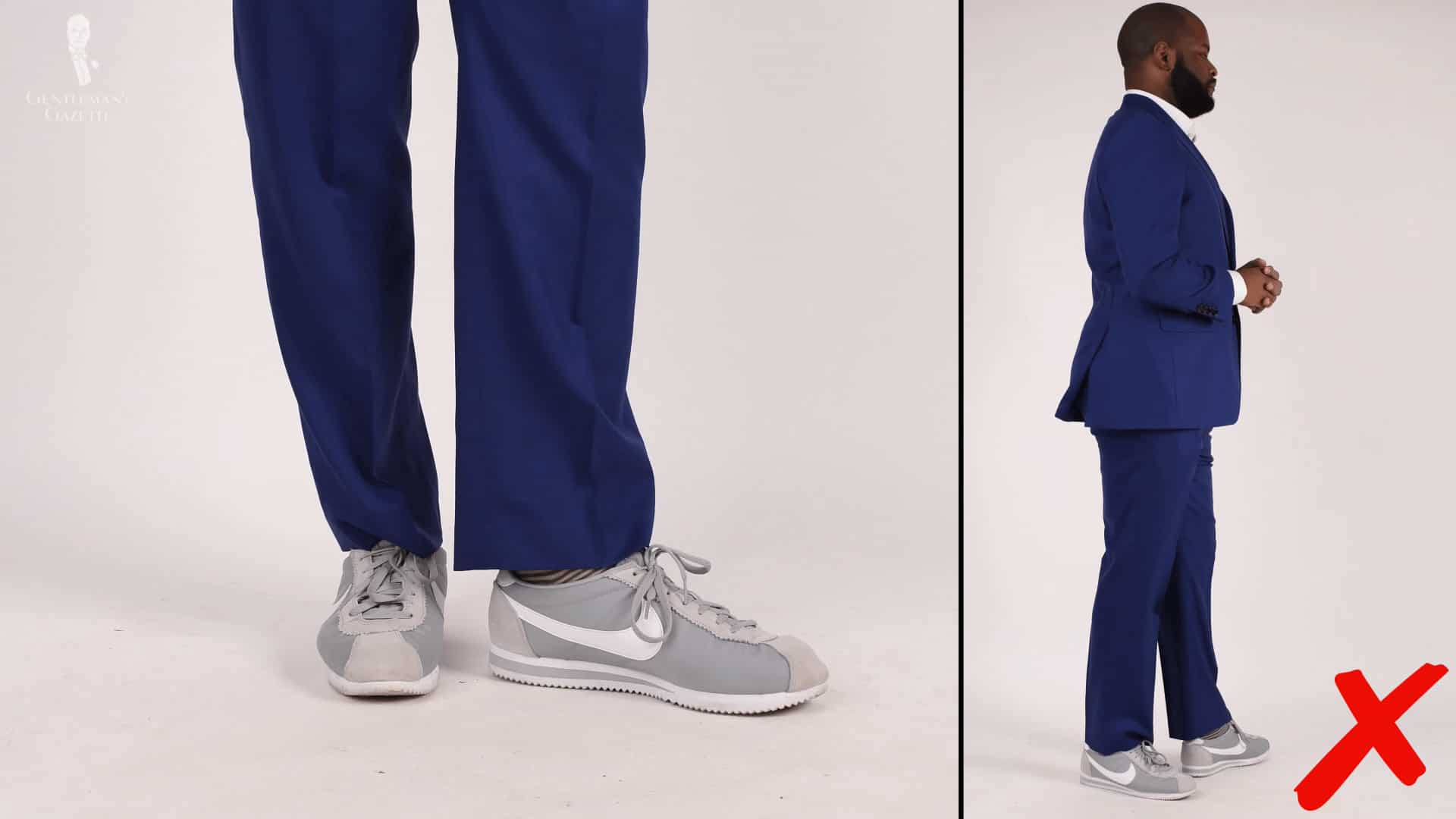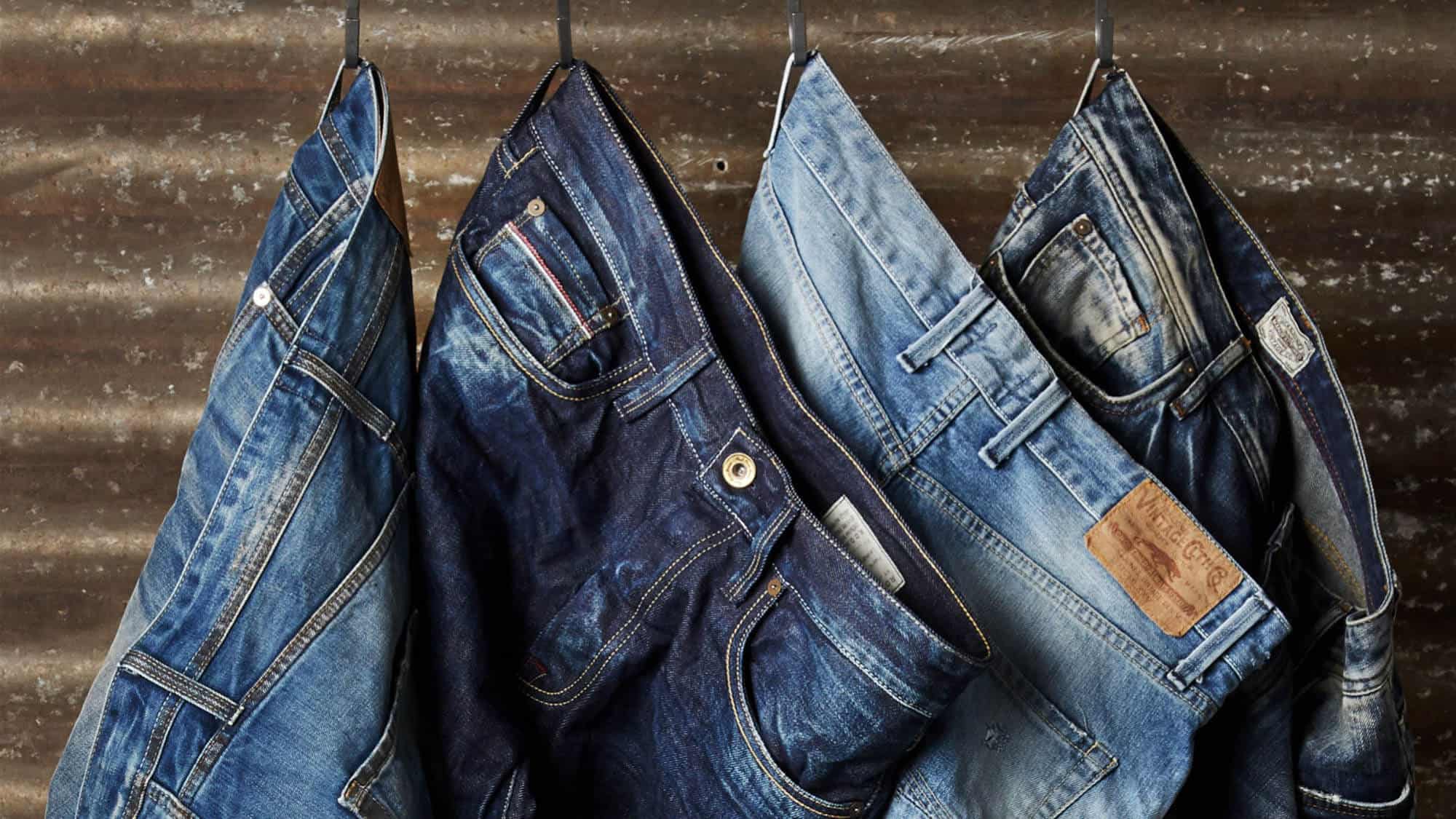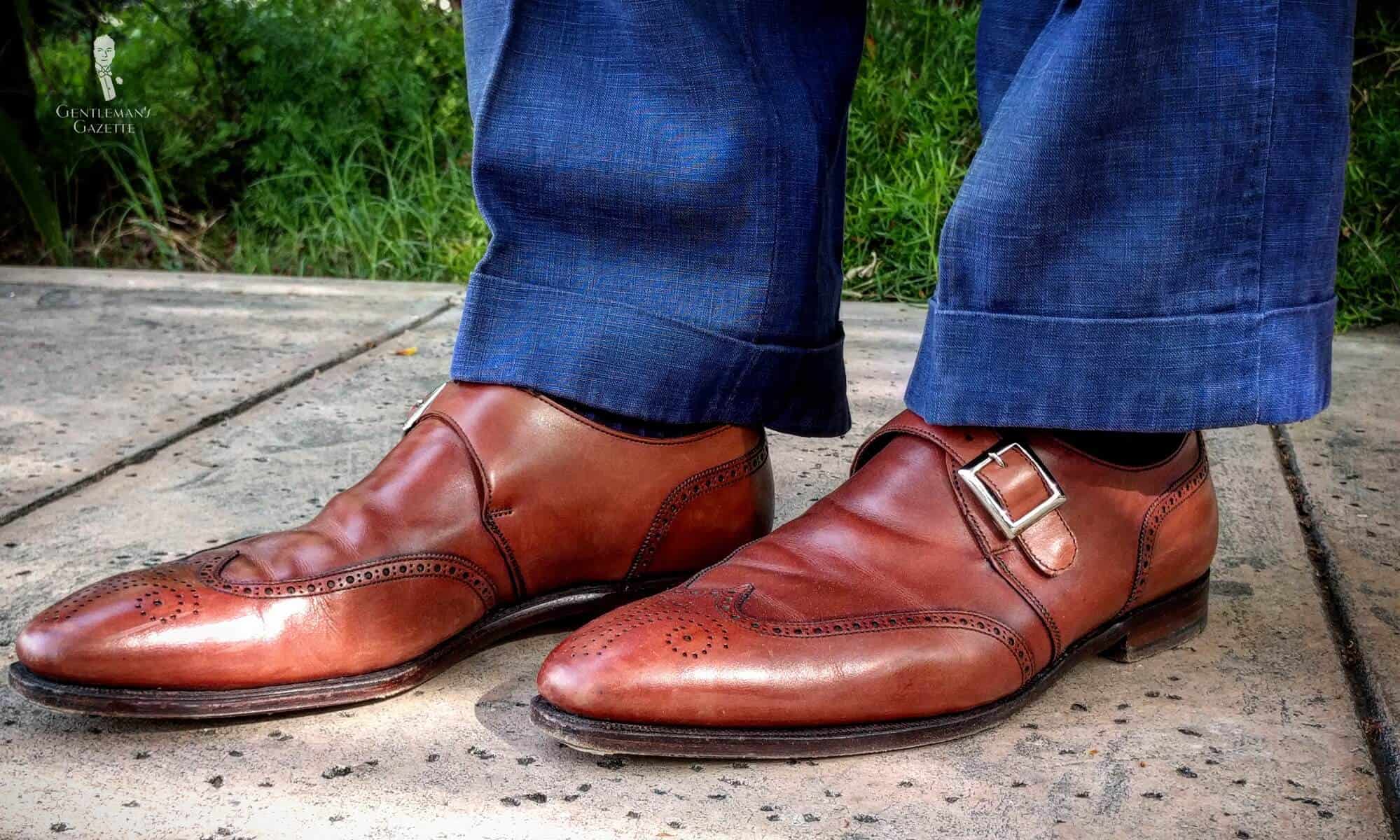Many brands stake their reputation on the country of origin of their products. But in a globalized world, where materials come from different parts and are assembled in many places, how much can a single country of origin really tell you?
In today’s world, you can buy just about any product that was constructed, woven, assembled, fabricated, or designed in a specific country. Most people would still like to believe that if a label says, for example, “Made in the US,” the product is entirely made in the US. However, that’s oftentimes not the case. It just means that the majority of the parts were actually made or assembled in the US. Sometimes, of course, there’s label fraud going on, and the thing that is “Made in the US,” may actually not be made in the US at all. But with that said, does where a product is manufactured actually matter in today’s world?
Should You Buy A Product Based on the “Made In” Label?
Making an informed decision solely based on the “made-in” designation is basically impossible in this day and age. Even if you’re in the store and you ask the staff where something is made, and they insist that a pocket square was made in Ireland, chances are that the linen wasn’t actually from Ireland. Perhaps the square was woven in Ireland, but the hand-stitching was made somewhere else. The fact of the matter is that many sales clerks and staff don’t know much about the supply chains of the brands they sell. And because of that, they can’t really tell you where something is made in its entirety.
US Rules for “Made In” Labels
There are different rules of what you can and can’t say on labels. So, let’s take a closer look at what “Made in” means in the US.

Interior tags of Red Wing Iron Ranger Boots, showing a country-of-origin designation of “Made in USA”
The Federal Trade Commission (FTC) requires that you don’t just have the country of origin, but also the fiber content, wash instructions, and the manufacturer or brand label. That being said, those labeling requirements do not apply until the product goes to sale to the consumer. So, you could import something without a label and then put something on after the fact, just before it’s sold to the consumer. That’s also true for garments. So, they can be delivered to the US in part or almost completed, and then, some work can be done in the US for the product to legally be labeled “Made in the US.” In the EU, for example, the fabric composition is required but the country of origin is not.

FTC Requirements
The Supply Chain & Globalization
What is pretty straightforward is that sometimes people don’t see the truth. However, the bigger problem in determining a country of origin is globalization, because from a single sticker it’s hard to infer what went into that product. Why? The country of origin is simply a very simplified approach to a globalized world. Just think of a car, for example; the cost of designing the car, engineering the car, and testing it, are huge expenses that may not be at all in a place where a car is manufactured. On top of that, a car is a symbol of many different parts for many different vendors and countries. So again, the development of all of that and where it’s manufactured, are two very different things.

Sven Raphael wearing green Fort Belvedere Driving Gloves and a green polo shirt.
For example, in 2018, the Jeep Cherokee was the “most American” car with apparently 72% of the parts being made or assembled in the US. Jeep is owned by Fiat, which is an Italian company, which is headquartered in London, England. Of course, if the part was designed in Italy and then made or assembled in the US, then it’s still counted as being an American part.
Countries of Origin and a Product’s Supply Chain
It seems obvious that cars are complex, but even clothing or simple accessories such as a tie, a pair of gloves, or a pocket square also have a globalized supply chain. As an example, let’s take a look at our Fort Belvedere ties.

Dark red, light blue, tobacco brown silk knit ties by Fort Belvedere
Ninety-eight percent of the world’s raw silk today originates in China. That also means that the best quality silk these days comes from China. And because we’re all about quality, we get our raw material silk from China. The raw material silk is spun into a yarn and woven into a fabric. That can happen either in China, or in Italy, or in England. But if it’s a jacquard tie and it’s woven, that’s a finished fabric; typically that happens in Italy.

Correct tie length: approximately halfway down the belt buckle (tie: Aqua Green Jacquard Woven Tie with Printed Diamonds in Orange Red and White – Fort Belvedere)
If the fabric is printed, it comes to England and is processed with a very complicated dye and discharge printing mechanism that is very labor-intensive and costly. It’s hand screen-printed in England. Because the printing process is labor-intensive and expensive, you could call this entire fabric made in England, even though the raw material, the yarn, as well as the woven part of the fabric were all made in China.

Madder ties definitely make you stand out (tie: Madder Print Silk Tie in Orange Red with Buff Micropattern Medium Size – Fort Belvedere)
Now, with the fabric, we have to make a tie. We checked many different manufacturers in different countries and we found that in Vietnam, we get a really high level of skill and craftsmanship, paired with a relatively low price and a very consistent output. Although a tie may say it’s 100% made out of silk, it usually has some form of interlining, made out of cotton, or wool, or both. The interlining for Fort Belvedere ties comes from Italy. It is made out of the wool of Australian or New Zealand sheep. The thread we use comes from a renowned German company and it is made out of 100% silk, which again, comes as a raw material from China.

Madder Silk Tie in Green with Blue Orange Motif – Fort Belvedere
We sew and cut our ties in Vietnam, but because the printing process of fabric is so expensive, we could technically call our entire tie made in England–even though just the printing actually happened in England. Isn’t that crazy? We thought so, too. Most people assume that a “made in” label will tell you where a product was actually cut and assembled or made. Because of that, we put a made in Vietnam label into our ties and bow ties.

Green jacket with Shantung Silk Striped Two Tone Bow Tie Bronze Orange, Green, Cream – Fort Belvedere
There are all these different steps from different countries that make something more expensive, but we do it because we believe in the quality of the final product. Of course, we could also try to do everything in one country. The problem is, if you want to have silk production in England, and then also split yarn there and weave it, not only is it going to be a lot more expensive, but chances are that the quality would also be lower. The point we’re trying to make here is that it is impossible to simply ascertain the real journey of a product and how it came to life simply by looking at that small “made in” label.
Fort Belvedere Gloves

Raphael wearing a British warm overcoat paired with Cognac Brown Tan Men’s Dress Leather Gloves from Fort Belvedere.
The same is true for gloves. The raw hides for our lamb Nappa gloves come from Ethiopia, which are tanned in Italy. Our peccary leather comes from Peru, which is then tanned in Germany. We send it off to Hungary because of a great tradition of glove making, but the interlining comes from Italy. Meanwhile, the cashmere comes originally from Mongolia. The thread again comes from Germany. We designate it “Made in Hungary” because that’s where the people sit, where they cut the gloves, and where they sew them together. For peccary, though, it’s so expensive and it’s tanned in Germany that we could technically call it “Made in Germany.”
Fort Belvedere Pocket Squares

Silk-wool pocket squares with rabbit motifs by Fort Belvedere
Even something as small and simple as a pocket square is not straightforward. For example, the silk fabric comes from China, and is then printed in Italy or in England. And then, some manufacturers just ship it to the Azores, or Morocco, or some other North African countries with a low labor cost where they get hand-rolled and sent back, but then, they have a “Made in Italy” or “Made in England” label in there. I find that’s really not what actually happened there, but legally, you’re totally in your right to do that.
Manufacturing and Labels
When we started Fort Belvedere, I traveled the world to visit many manufacturing facilities and sometimes, they would just plainly lie and put a “Made in Germany” label in there, even though the entire production took place in Vietnam. Frankly, I found that quite disheartening, especially considering some local regulations. For example, the state of California requires that all the assembly is made in the US in order to label it “Made in the US.” The rules at the federal level are a little different; you can have a “Made in USA” label if it is all or virtually all made in the US.

A seamstress at work in Germany
In California though, it has to be 100% made in the US. But what does that mean? For example, for a tie, I’m not aware of any domestic silk production facility with silkworms being here in the US. So, does that mean that no tie can ever truly be made in the US? As a consumer, keep in mind that these “made in” labels are typically used by companies to justify a higher price from the consumer, because they automatically assume that a “Made in US” product is more expensive than a “Made in China” product.

Shinola Watches
Years ago, I did a factory visit at a Shinola Factory in Detroit, and I was surprised to see so many parts made in China, because the big selling point of their brand was their “Made in Detroit” message.
First-World and Low-GDP Countries
If you see a country of origin label and it’s in a first-world country, chances are, there are certain elements that are better for the environment or for the workers who made that product. Low-GDP countries like Sri Lanka, Nicaragua, the Dominican Republic, or Bangladesh are often used by fast-fashion companies because they can subcontract a manufacturer, and they don’t really have to worry about the conditions people are working under. You may recall that in recent years, Bangladesh had frequent issues with fires and workers dying because safety regulations weren’t on top of the mind of the subcontractor.

3 different clothing brands made in Bangladesh
Manufacturers often claim that they don’t know what the subcontractors do, if they were promised one thing, but they did another. At the end of the day, it’s a murky system that’s at best obscure and at worst exploitative, and it’s one of the reasons why even big companies like Nike have a hard time telling you exactly what their entire supply chain looks like, how people are involved from start to finish, and where all the products are coming from. Of course, if you’re a company that swears by manufacturing in Canada, the US, Germany, or elsewhere, you can at least assume that they care about a certain level of environmental standards, workers’ safety, and sometimes also the quality of their products.

Never attempt to wear sneakers with a full suit
I’ve seen excellent quality products come out of Sri Lanka, especially in the clothing realm. So just because something is from a low-GDP country, doesn’t mean the quality can’t be there. On the other hand, in a first-world country, you will likely have minimum wages, certain laws that regard the work time, hours, and capacities, and those laws are typically also more often enforced. Also, in countries with a lower GDP, oftentimes, there’s less oversight on an environmental impact and subcontractors or owners of companies are less inclined to follow the rules.

Different styles of blue jeans
For example, if you go to the center of denim production in China, you can see rivers that are blue because of all the dark blue denim color. That being said, you can also go to the US and look at 3M, where some of their manufacturing facilities have leaked bad substances into the water and people were harmed by it. So just because in a first world country, doesn’t mean that companies will always obey environmental regulations or will do no harm to the environment or people close to their factories.
Heritage, Quality, and Country of Origin
A “made-in” label can sometimes also indicate the heritage quality of a certain country. Let’s run through some examples. Hungary is known for glove production, classic men’s dress shoes, and of course, paprika. Hungarian paprika is known to be of quality and tasty. In Germany, a town like Solingen is famous for its cutlery, and Glashütte is known for watchmaking. When it comes to cars, a car that’s made in Germany has likely a higher expectation and warrants a higher price than a car made in Romania or Asia.

Nomos Tangente Watch from Glashütte
England has a long-standing tailoring tradition. They’ve been weaving and printing silk for centuries, and they’ve even little towns like Northampton where you find lots of shoe factories.

Crockett & Jones Monk Strap shoes with silver buckle, blue pants and blue and navy striped socks
Italians are known for their leather goods, leather tanning for their clothing, and for their cashmere goods. I could go on and on about different countries and what they’re known for. While it’s generally true that you find a higher level of quality if there is a centralized industry around a certain good, there are also sometimes people who try to cut corners and benefit from the general perception of quality. Based on these preconceptions, we sometimes are in the illusion that low-cost countries will only produce fast fashion and well-known countries will only produce quality.

Scarves, like these from Fort Belvedere, are a perfect choice for cashmere. They can be worn for decades, and are soft and warm on the neck.
Reality is, that’s not always true. Just the other day, I like the pair of Meermin shoes made in China, and they’re of very high quality because a lot of know-how from the Carmina family from Spain went into that shoe. On the other hand, I had a German Bosch microwave which just sucked. At the end of the day, I think if you look hard enough, you can find quality and crap in every country. For example, Leica, which is the most profitable camera maker in the world today. They charge really high prices and part of that is justified with being manufactured and designed in Germany, which is something they push hard in their marketing materials. They make a good product and they are smart people, so they looked at the rules very closely and they put up a 560,000 square foot production facility in Portugal.

Open cuffs, Fort Belvedere shadow stripe socks & Meermin Cordovan tassel loafers
If you look at their products, nothing ever says made in Portugal at all, yet a lot of the parts and cameras are made in Portugal, just to the point where they’re shipped off to Germany and finished off, so they can legally be called designed and manufactured in Germany. Does that mean that a Leica camera that is partially made in Portugal is better or worse? No, it doesn’t. It’s probably the same quality, but just something to keep in mind. The GDP in Portugal is a lot lower than in Germany and I suspect that’s the reason why Leica built that plant there in the first place.
My Two Perspectives on “Made In” Designations
As a consumer, you don’t always know where these cost savings go. Do they go towards customer service, maybe an improved product, maybe marketing, or maybe just as profit on the books? Fortunately, I have two perspectives from both sides. On one hand, I’m a consumer and on the other hand, a manufacturer because we produce all of our own products and design them ourselves. Both at Fort Belvedere and Gentleman’s Gazette, we firmly believe in quality and because of that, that’s what we strive for. We also believe that a high-quality product can be made anywhere in the world, and so we try to get a really high-quality product at a fair price.

Dark Red Velvet Spray Rose Boutonniere from Fort Belvedere
Of course, we want our workers to earn a fair wage. We don’t want them to be overworked. We want them to have time to be with their families, and we want to protect and respect the environment. Sadly, that’s not something that can be communicated on a simple label. If you really wanted to display the entire journey of the product, and everything that goes into it, you’d need a little novel next to it, to make videos about it, or talk about it.

Luxurious Fort Belvedere Cognac Tan Leather Belt made from finest German calf-skin upper from Alpine cows
Conclusion
In a nutshell, what can a country of origin tell you? The answer is: not much. Maybe it can give you a hint about the quality and where it was made, but that’s not always true and it really just gives you a small glimpse into what actually happened. So ideally, always talk to the brands you buy from to understand what they do, where their stuff is coming from, and how it’s made, and don’t just look at the origin label.